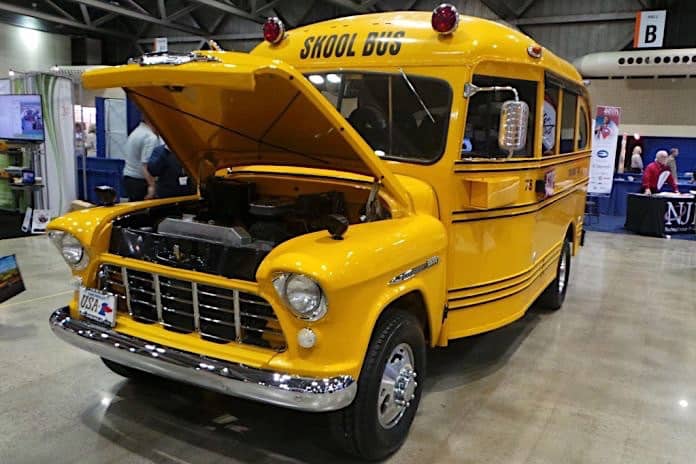As nationwide unemployment figures dropped to the lowest point in the past six years and fuel prices the lowest in the past four, yellow school bus manufacturing kept chugging along with 5-percent, year-over-year growth.
The total of 39,053 units produced from Nov. 1, 2013 through Oct. 31, 2014, as reported to School Transportation News by all seven school bus manufacturers, plus Ford and GM, indicates a continued ramp-up as the industry keeps digging itself out of the recessionary hole that began forming about the same time unemployment spiked.
But there remains much cautious optimism for continued growth among school bus manufacturers. Those that responded to questions on projected orders for this coming year forecast that the average number of buses to be sold will amount to only 30,300 units, nearly the exact real number reported just four years ago.
While neither the nation nor the this industry is out of the woods yet, some encouraging trends are developing. Unable to keep up with last year’s 13-percent uptick, school bus production remained steady and shadowed that of medium- and heavy-duty trucks. School districts increasingly are finding themselves in better budgetary environments and able to catch up on school bus replacements that were sidelined during the recession and the years immediately following.
“Thanks to improving home values, property tax revenue and state, local and municipal budgets, some delayed replacement is getting fulfilled,” commented Steve Tam, vice president of the commercial vehicle sector for ACT Research. “Hopefully, lower fuel prices will eliminate some of the competition for budget dollars, but that will depend on how low prices go and how long they stay there.”
The good news continues with a 6-percent increase in Type A production to 8,320 units, the most since the 8,810 reported for 2009- 2010. Last year also signaled a tip in favor of Type A-2 schools buses that weigh more than 10,000 pounds GVWR, especially as Ford and GM now essentially only manufacture to that specification.
Meanwhile, Type D transit-style school buses continued its disappearing act as it fell slightly to 3,662 units from 4,098. This was the lowest output for this option since STN began compiling the information in the early 1990s, and it represents the continued industry shift to specify more Type Cs to meet operational needs.
Robert T. Pudlewski, principal of Fleet/ Ops Consulting, said this year’s data indicate the industry is settling into an “acceptable” average fleet age and that deferred purchasing is coming to a close
“The only unknown is the effect on new bus sales caused by contractor competition for bids on existing business, with the bid winner having to buy new buses to comply with taking over an incumbent’s business,” Pudlewski added.


















